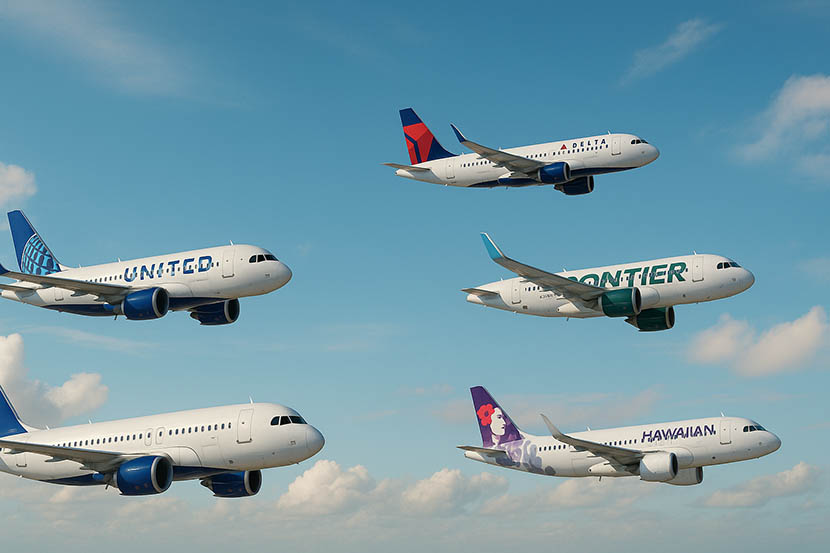Alaska Airlines Sets New Standards For Long-Haul Travel Between Seattle And Seoul With Boeing 787-9 - Travel And Tour World
Saturday, June 7, 2025

Alaska Airlines is set to revolutionize long-haul travel with the introduction of non-stop flights between Seattle and Seoul, starting in September 2025. To meet the demand for a more premium service, the airline will operate these flights using Hawaiian Airlines’ state-of-the-art Boeing 787-9, replacing the originally planned Airbus A330-200. This strategic move promises to elevate the travel experience, especially for business-class passengers, offering enhanced comfort with direct aisle access, privacy doors, and luxurious suites. By leveraging Hawaiian’s advanced fleet, Alaska Airlines aims to redefine long-haul service and strengthen its position in the competitive international market between Seattle and Seoul.
In March 2025, Alaska Airlines made waves in the aviation industry with the announcement of new non-stop flights connecting Seattle to Seoul. At the time, the airline’s lack of long-range aircraft led to the decision to partner with Hawaiian Airlines, which would operate the flights using their Airbus A330-200. However, just months later, there’s a significant update to this plan. As reported by BlueSky, the new route will now be serviced by a Hawaiian Airlines Boeing 787-9, a change that is set to elevate the passenger experience. The flights are scheduled to begin on September 12th, 2025, marking the second of three long-distance routes announced by Alaska Air Group (AAG), which owns both Alaska Airlines and Hawaiian Airlines. This shift in aircraft promises a new level of comfort and service for passengers on the Seattle to Seoul route.
While both the Airbus A330-200 and Boeing 787-9 are part of Hawaiian Airlines’ fleet, the difference in their configurations will provide two very different flying experiences. The A330-200, which is designed with 278 seats, including 18 business class seats, has a configuration that’s more suited to leisure travel. This is ideal for Hawaiian routes, where the market is often geared towards tourists looking for a relaxing experience with less emphasis on business-class comfort. The business-class seats on the A330-200 are Optimares Maxima Plus lie-flat seats arranged in a six-abreast layout. While comfortable, the seating configuration is dense, catering more to leisure travelers who prioritize quantity over the exclusivity of their travel experience.
In contrast, the Hawaiian Airlines Boeing 787-9 will offer a significantly upgraded business-class experience. With a total of 34 business class seats, the 787-9 has a total capacity of 300 seats, offering 266 economy class seats. Business class on the 787-9 will feature the Adient Ascent suite, a cutting-edge product designed with direct aisle access and privacy doors. The window suites are arranged in a reverse herringbone configuration, while the center suites follow a herringbone layout, offering a higher level of privacy and comfort compared to the A330-200. The Dreamliner is a far better fit for the business-oriented route between Seattle and Seoul, where passengers expect a higher standard of luxury and service. Hawaiian Airlines’ switch to the Boeing 787-9 from the A330-200 makes perfect sense, particularly considering that the 787 is better equipped for long-haul international flights, with its quieter engines, more comfortable seating, and advanced amenities.
Alaska Airlines has long eyed international expansion, but its fleet has lacked the widebody aircraft required for long-haul operations. The airline’s parent company, Alaska Air Group, which also owns Hawaiian Airlines, is working towards obtaining a single Air Operating Certificate (AOC) for both airlines, but they will maintain their separate brands. This acquisition of Hawaiian Airlines provided Alaska with the necessary assets to grow its international footprint, including access to widebody aircraft like the A330 and Boeing 787-9. As part of the merger, Alaska has ordered nine Boeing 787-9s, but they will not take delivery of these aircraft until later, which is why they are currently relying on Hawaiian Airlines’ fleet for long-haul routes.
So far, Alaska has used Hawaiian Airlines’ A330 for its new Tokyo-Narita route and will now use the 787-9 for the Seattle to Seoul route. This partnership makes sense, as the two airlines can effectively complement each other, leveraging Hawaiian’s widebody fleet while Alaska builds its own capabilities. With this arrangement, Alaska Airlines is able to tap into new markets without having to wait for its own 787s to arrive.
Alongside the Seattle-Seoul route, Alaska and Hawaiian have announced plans to expand their international offerings. In May 2026, Alaska Airlines will launch its first-ever direct flight from Seattle to Rome, marking a significant milestone in the airline’s expansion into international markets. This new route will open up convenient, non-stop travel between the Pacific Northwest and Italy, offering passengers an efficient and comfortable option for exploring one of Europe’s most iconic destinations. With this move, Alaska Airlines continues to strengthen its global network and cater to the increasing demand for transatlantic travel. This route will be operated and branded entirely by Alaska Airlines, marking an exciting expansion of their international offerings. This route will also utilize a Boeing 787-9 and will mark the introduction of a new long-haul experience for the airline, which will likely include updated interiors and premium services.
While the Seattle to Seoul route will continue to be operated by Hawaiian Airlines, the 787-9 makes the most sense for the route. With its cutting-edge amenities and better configuration for business class, the aircraft will cater to a more discerning passenger base. Over time, as Alaska takes delivery of its own 787s, more of its long-haul services will be operated under the Alaska Airlines brand, although Hawaiian will continue to service routes to and from Hawaii.
The Seattle to Seoul market is one of the most competitive international routes, with several major players already offering non-stop services. Delta Air Lines, the second-largest carrier out of Seattle, has long flown to Seoul with an Airbus A350-900, a state-of-the-art aircraft that features a 306-seat configuration. Delta’s “359” configuration includes 32 DeltaOne suites with privacy doors, 48 Premium Select seats, and 226 economy class seats. The DeltaOne suites are equipped with the Thompson Vantage XL, a staggered seat design that includes privacy doors, offering a comfortable and private experience. However, this product is considered an older version when compared to Hawaiian’s more advanced Adient Ascent suites.
In addition to Delta, both Korean Air and Asiana Airlines are strong competitors on this route. Korean Air operates a Boeing 787-10, with 36 Collins Horizon suites offering direct aisle access and privacy doors for business class passengers. Meanwhile, Asiana operates the Boeing 777-200ER, which offers either 22 or 24 business class seats with the Stelia Solstys staggered product, although this will be phased out as Asiana integrates into Korean Air following their recent merger approval.
The Seattle to Seoul market has become highly competitive, with several airlines offering premium cabins with privacy doors and direct aisle access. Alaska Airlines is positioning itself as a strong contender with its Boeing 787-9s, promising an exceptional flight experience for business travelers looking for both comfort and efficiency.
Alaska Airlines is preparing to initiate non-stop flights from Seattle to Seoul from September 2025, utilizing the sophisticated Boeing 787-9 of Hawaiian Airlines to provide the long-distance travel with enhanced amenities and comfort. This strategic move is the next big leap in Alaska’s expansion on the international platform.
Alaska Airlines’ new non-stop flights between Seattle and Seoul represent a bold step into the competitive international market. The switch from Hawaiian Airlines’ Airbus A330-200 to the Boeing 787-9 is a significant upgrade in terms of passenger experience, especially for business travelers. By relying on Hawaiian’s fleet until its own Dreamliners are delivered, Alaska Airlines is able to quickly expand its international services while maintaining a high level of service. With this strategic move, Alaska is set to compete fiercely on the Seattle-Seoul route, offering a premium experience that rivals other major carriers like Delta, Korean Air, and Asiana.











